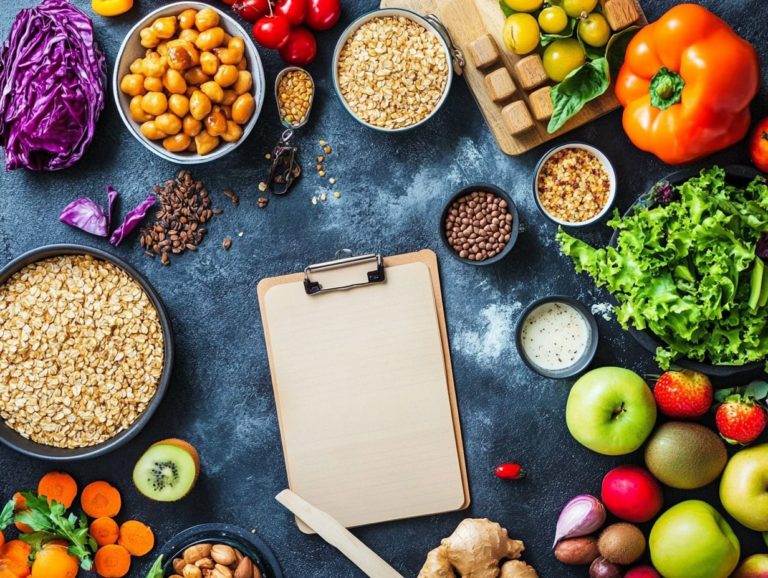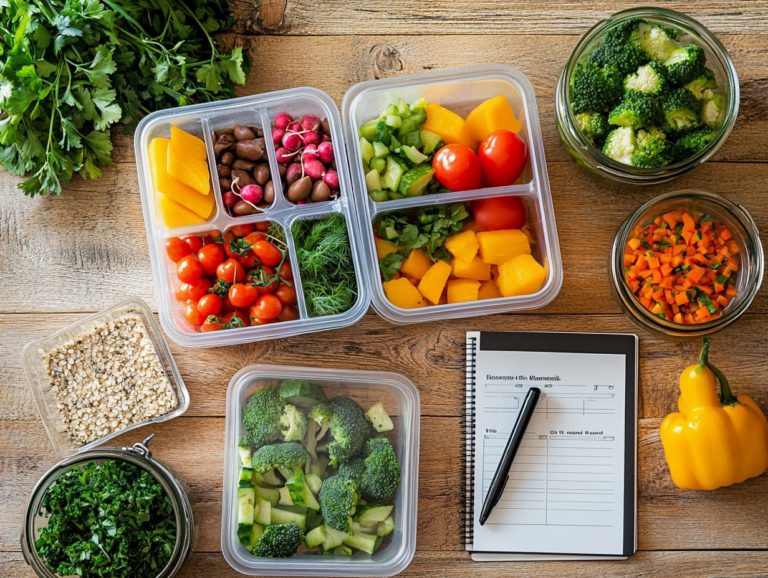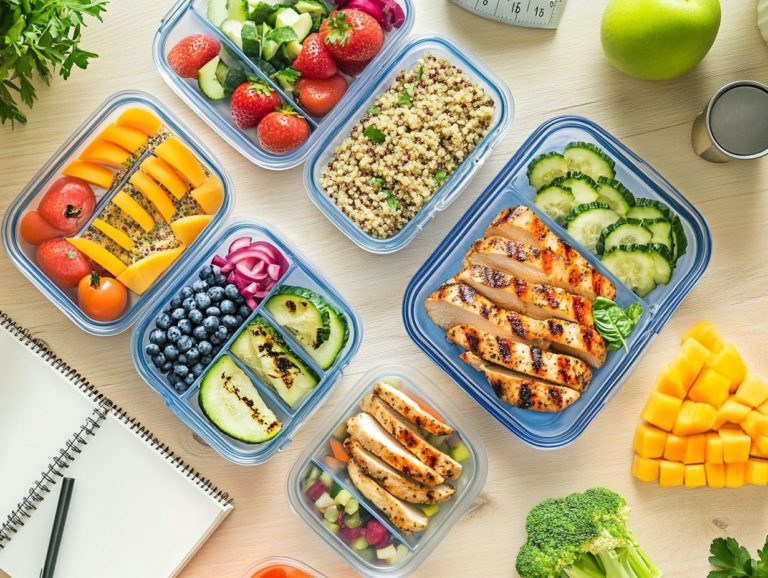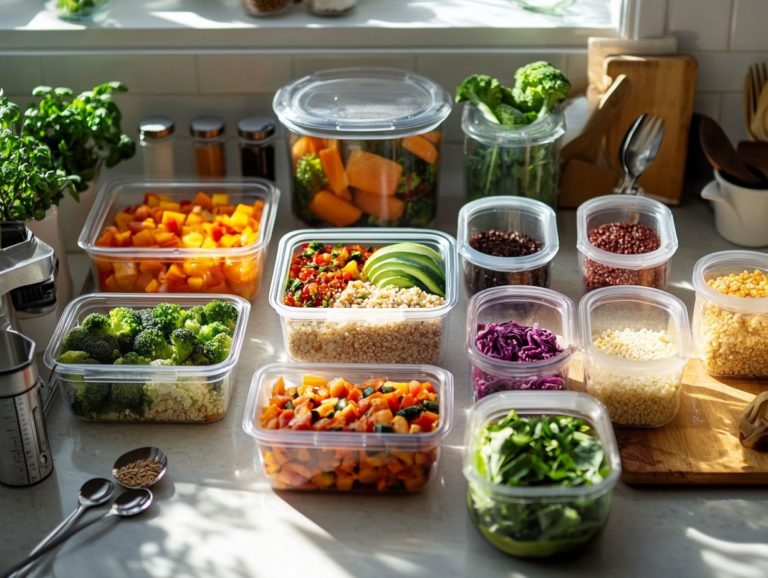How to Incorporate Leftovers into Meal Plans
Leftovers often receive undeserved criticism, yet they are a hidden gem in your kitchen. They save you both time and money while playing a vital role in reducing food waste.
Discover the fantastic benefits waiting for you! This article offers smart storage tips and mouthwatering meal ideas that reinvigorate yesterday’s dishes. It also addresses how to handle those leftovers you might not be thrilled about, ensuring that nothing goes to waste.
Transform your approach to mealtime and uncover the potential of your culinary creations!
Contents
- Key Takeaways:
- The Benefits of Leftovers
- How to Properly Store Leftovers
- Incorporating Leftovers into Meal Planning
- Maximizing Flavor and Variety
- Dealing with Leftovers You Don’t Want to Eat
- Frequently Asked Questions
- What are some common struggles with incorporating leftovers into meal plans?
- How can I use leftovers to save time and money on meal planning?
- What are some creative ways to use leftovers in meal plans?
- How can I make sure my leftovers are safe to use in meal planning?
- What types of foods are best for incorporating into meal plans?
- How can I get creative with using leftover ingredients?
Key Takeaways:
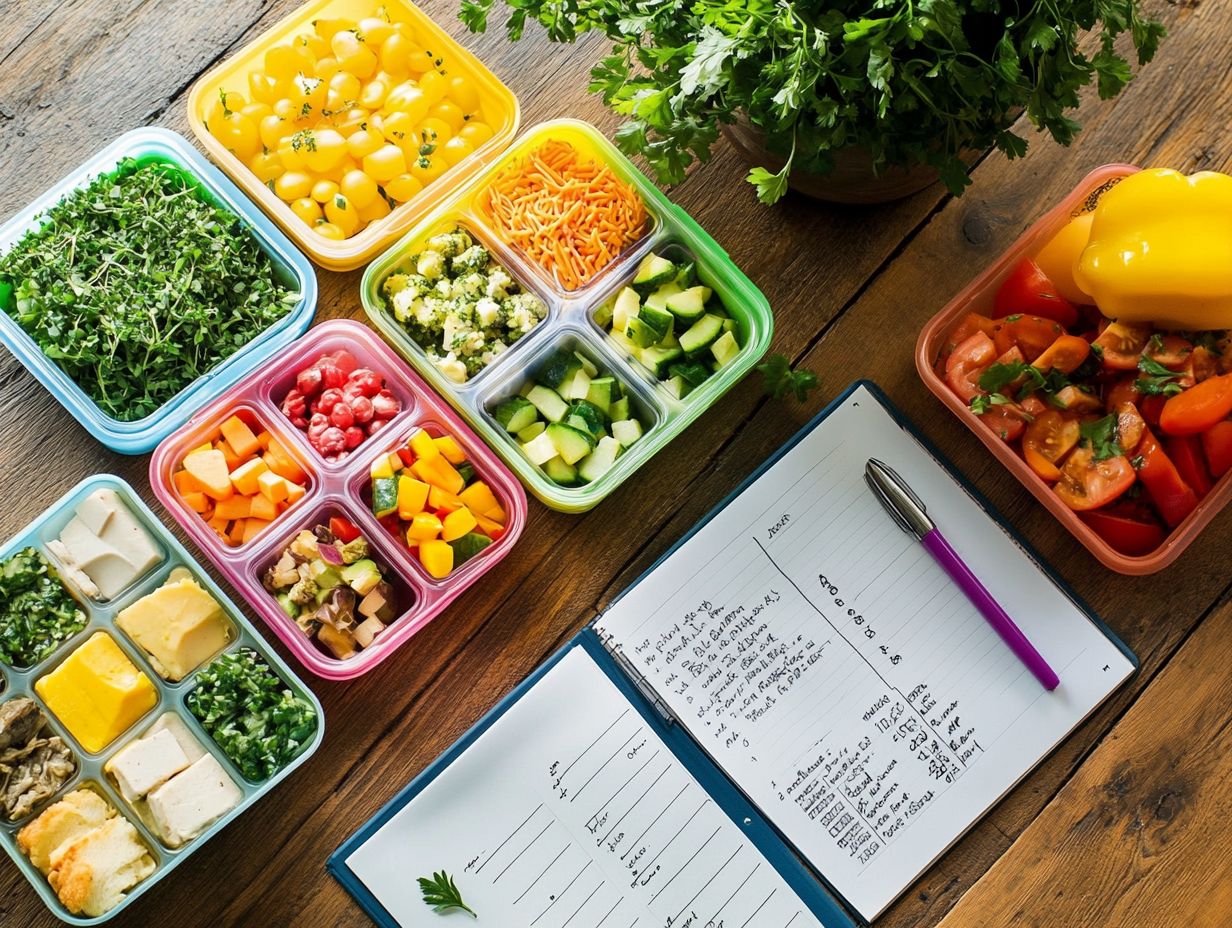
The Benefits of Leftovers
For busy moms like you, balancing work, family, and personal time can be challenging. Incorporating leftovers into your meal plan can truly be a game-changer.
It not only provides nutritious meals for the entire family but also helps reduce food waste. By planning your meals and making the most of those leftovers, you can whip up delicious dinners with minimal effort.
This way, your family can savor a diverse menu while you save invaluable time and money throughout the week.
Saving Time and Money
Saving time and money is one of the most significant advantages of utilizing leftovers, especially for busy moms who want to simplify meal preparation. Incorporating meal planning into your weekly routine maximizes your grocery budget and reduces daily stress around meals.
A practical strategy is to engage in batch cooking, which means cooking large amounts of food at once so you can use it throughout the week. For instance, leftover grilled chicken can effortlessly transform into a flavorful salad or a hearty stir-fry, while pulled pork might evolve into delicious tacos or a comforting sandwich.
You can use meal planning apps to enhance your efficiency; these tools offer customizable menus, shopping lists, and reminders, ensuring that every meal is well thought out and that nothing goes to waste. By embracing these strategies, you can enjoy nutritious meals without the hassle.
Reducing Food Waste
Reducing food waste is crucial for cultivating a sustainable kitchen, and incorporating leftovers into your meal prep is a smart tactic to achieve this while ensuring your family enjoys nutritious meals.
By being mindful of how you utilize food, you can significantly contribute to environmental preservation. For example, instead of tossing out those leftover pieces of grilled chicken, why not transform them into zesty chili lime tacos, topped with fresh ingredients? Similarly, leftover roasted vegetables can be revitalized into a vibrant spinach mint salad, providing not only variety but also essential nutrients.
Every effort you make to repurpose unused food cuts down on waste and lessens the resources needed for food production, ultimately supporting a healthier planet. Embracing these practices can lead to a meaningful impact on sustainability.
How to Properly Store Leftovers
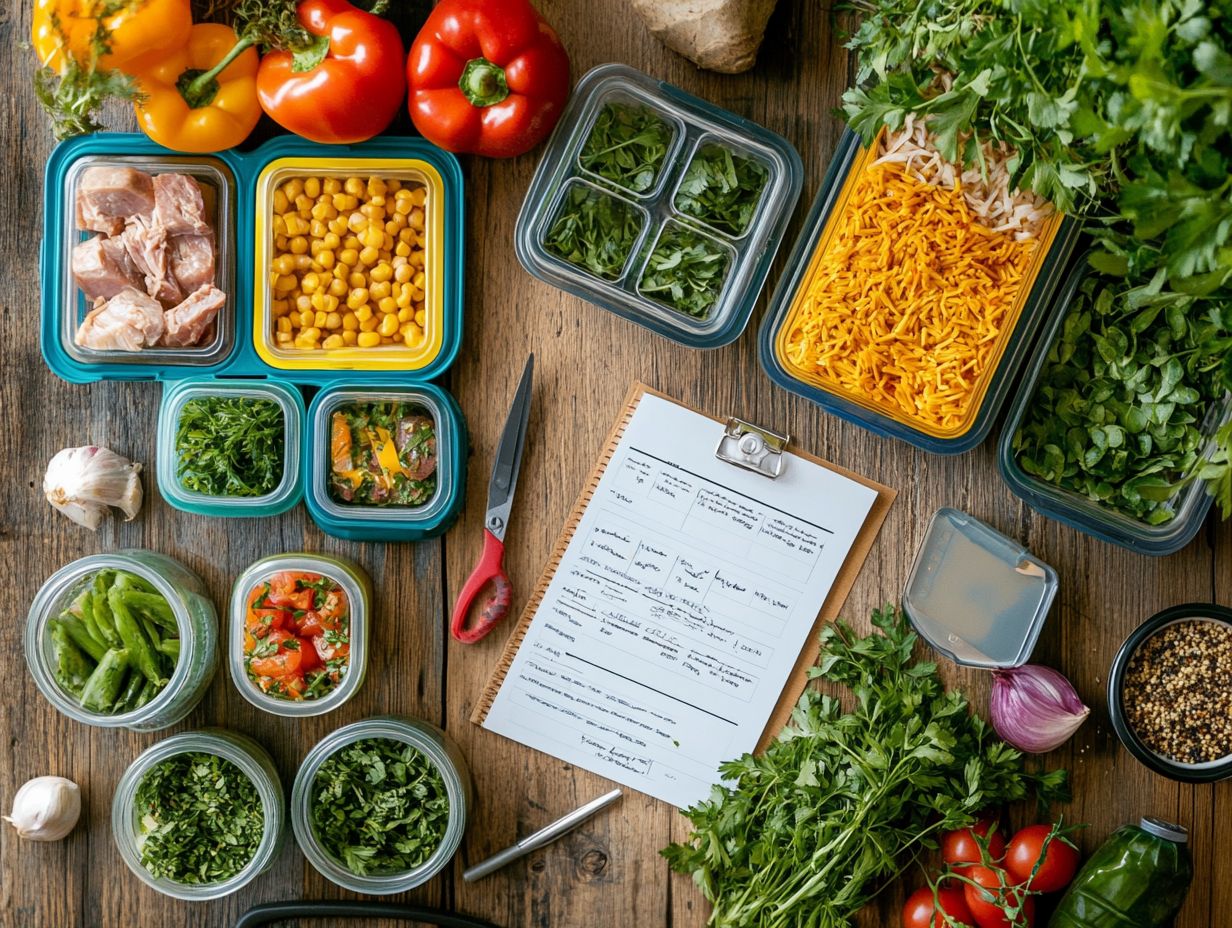
Properly storing leftovers is essential for preserving their freshness and nutritional value. This critical aspect of meal preparation enhances your culinary experience and plays a significant role in minimizing food waste in your kitchen.
Tips for Safe Storage
To safely store your leftovers, follow these essential practices to keep your meals both nutritious and delicious, while also minimizing food waste.
By sticking to these guidelines, you can extend the shelf life of your food. Let your leftovers cool to room temperature before placing them in the refrigerator; letting food cool helps prevent germs.
Label your containers with the storage date. This keeps track of freshness and reduces the chances of meals being forgotten and eventually tossed out.
Consider adding chicken broth during meal prep you ll boost the flavor instantly!
Incorporating Leftovers into Meal Planning
Incorporating leftovers into your meal planning can lead to delicious dinners and quick lunches. Learning how to use leftovers in your meal plan transforms meal prep into a more efficient and enjoyable experience for busy moms.
Meal Ideas and Recipes
Creative meal ideas and recipes help maximize the potential of your leftover proteins, turning them into delightful dinners that your family will look forward to.
By using versatile proteins in various cuisines, you can create a hearty chicken avocado soup or flavor-packed chili lime tacos that serve as quick and satisfying lunch options. Picture this: mixing leftover chicken or beef into a vibrant spinach mint salad for a refreshing twist.
The beauty of these ideas is their flexibility, inviting you to experiment with numerous herbs and spices.
Pairing proteins with unexpected flavors elevates simple leftovers into gourmet-inspired dishes, making every meal feel distinct and fulfilling.
Maximizing Flavor and Variety
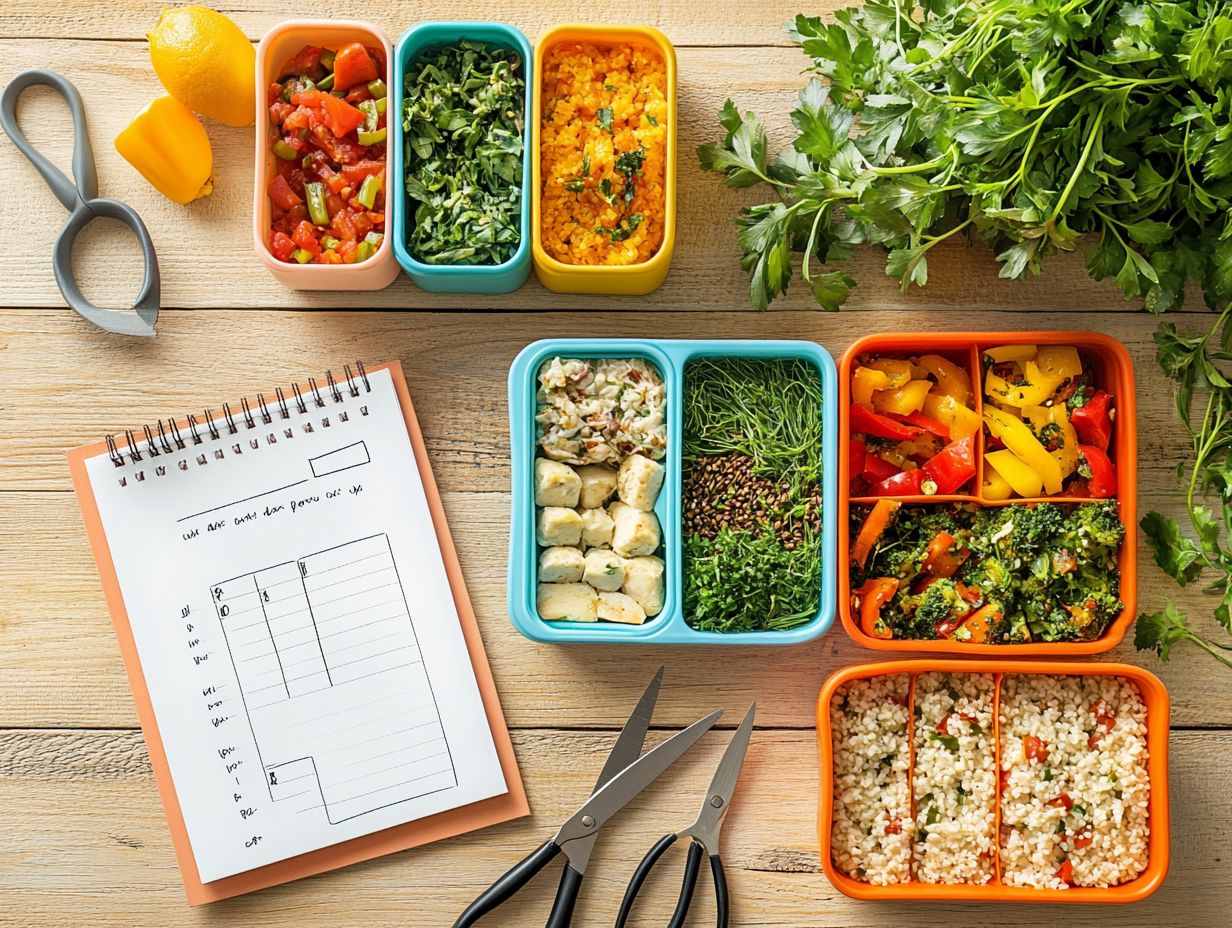
By maximizing flavor and variety in your meals, you can turn simple leftovers into exciting and delicious dinners. This ensures every bite is not only satisfying but also enjoyable for the entire family.
Ways to Transform Leftovers
Transforming your leftovers into new meals is resourceful and a fun way to keep your family enjoying delicious dinners throughout the week.
By creatively reusing leftover proteins, you can whip up delightful casseroles or hearty soups that feel like fresh culinary adventures. For instance, take that leftover chicken, mix it into a creamy casserole with vibrant vegetables, sprinkle on breadcrumbs, and bake it to perfection for a cozy dish that warms the soul.
Alternatively, chop up that bit of roast beef and turn it into a savory beef stew with aromatic herbs and fresh veggies. You can speed up meal prep by using quick cooking techniques like blanching your vegetables or a pressure cooker.
Don t forget that proteins like shredded pork or grilled shrimp can shine in countless dishes from zesty tacos to colorful stir-fries making your weeknight cooking both effortless and satisfying.
Dealing with Leftovers You Don’t Want to Eat
Dealing with unappetizing leftovers can be a fun challenge! Finding creative strategies to handle them not only reduces food waste but also enhances your meal prep for quick lunches or family dinners.
Donating or Repurposing Leftovers
Donating or repurposing your leftovers is an excellent way to prevent food waste while making a positive impact in your community. This ensures that no meal goes to waste.
By sharing surplus food with local shelters or food banks, you not only assist those in need but also help the environment by reducing the carbon footprint associated with discarded food. It s crucial to follow safe donation practices, such as checking expiration dates and ensuring that your leftovers are stored in appropriate containers.
Get inventive in the kitchen by transforming leftover ingredients into entirely new meals. For example, think about turning roasted vegetables into a vibrant pasta dish or blending last night s grilled chicken into a flavorful soup.
This clever approach saves you time and money, making meal prep a breeze!
Frequently Asked Questions

Curious about how to make the most out of your leftovers? Here are some frequently asked questions to inspire you!
What are some common struggles with incorporating leftovers into meal plans?
- Not knowing how to use leftovers in new and creative ways.
- Not having enough leftover food to make a full meal.
- Not liking the taste of reheated leftovers.
How can I use leftovers to save time and money on meal planning?
Leftovers can be a great way to save time and money on meal planning. They can help you make quick and easy meals without having to buy additional ingredients. This also helps reduce food waste and save money on groceries.
What are some creative ways to use leftovers in meal plans?
- Turn leftover chicken into a stir-fry.
- Add leftover vegetables to a soup.
- Use leftovers as toppings for salads or in wraps.
How can I make sure my leftovers are safe to use in meal planning?
To ensure your leftovers are safe to use in meal planning, store them in airtight containers containers that seal tightly to keep air out and food fresh within 2 hours of cooking. Leftovers can typically be safely stored in the refrigerator for 3-4 days.
What types of foods are best for incorporating into meal plans?
Leftovers from meals that can be easily reheated, such as casseroles, soups, and stews, are great for meal plans. Cooked meats, grains, and vegetables are also versatile leftovers to use in different meals.
How can I get creative with using leftover ingredients?
One way to think creatively about leftover ingredients is to consider their flavors and textures. For example, leftover roasted vegetables can be pureed into a pasta sauce or added to a frittata.
Start transforming your leftovers today and make meal prep exciting and waste-free!

